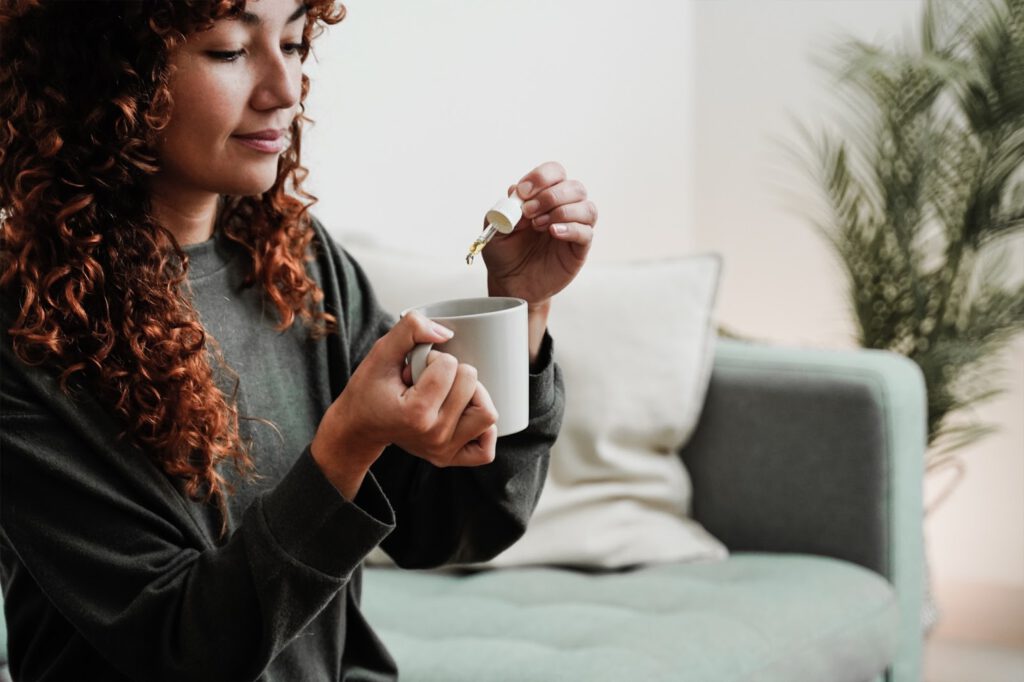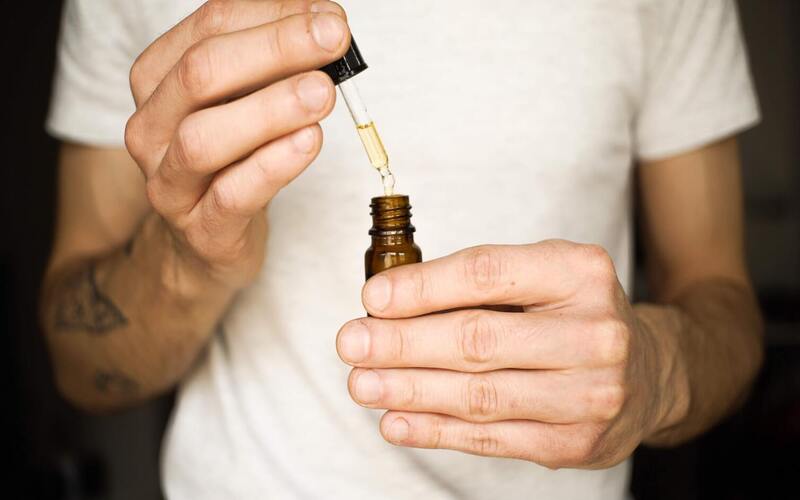You walk into a CBD store ready to buy some high-strength CBD. Rows of amber bottles line the shelves, stating different potencies and terms like ‘broad-spectrum’, CBG and MCT oil. All you want is some effective CBD to make life that little bit smoother.
Shopping for CBD oil doesn’t have to be a confusing experience if you know what you’re looking for. With this guide, we look at what to look for if you want high-strength CBD oil and how high you need to go to feel the benefits.
Full-Spectrum, Broad-Spectrum, Isolate, What Does It Mean? Why Does It Matter?
Before you even look at the number of milligrams of CBD in the bottle, it’s essential to know about the type of high strength CBD you’re buying. Cannabis plants contain many valuable compounds, namely, cannabinoids (e.g. CBD, THC, CBG, CBN), flavonoids and terpenes. The terms full-spectrum, broad-spectrum and CBD isolate are used to describe what cannabis compounds are included in the bottle.
Various terpene and cannabinoid combinations have been known to create different effects on the mind and body. That’s why different strains of cannabis are used for different purposes, for example, ‘Purple Kush’ is used for the relaxing, happy, calm effects, while ‘Sour Diesel’ is popular for productivity.
The synergy between cannabinoids and terpenes is known as the entourage effect. In Aristotle’s words about synergy, the whole is greater than the sum of the parts.
Full-spectrum
This term is often used to describe CBD extract containing legally detectable THC traces. Full-spectrum CBD oils should also include other valuable cannabinoids like CBD, CBN and CBG. Full-spectrum CBD may pose a problem when travelling with CBD to countries that take a stricter stance on THC and if you are drug tested for any reason. Depending on how much THC is legal in your state or country, taking too much full-spectrum CBD oil can have adverse effects like anxiety or dizziness.

Broad-spectrum
Like full-spectrum, broad-spectrum contains not only CBD but other hemp-plant compounds with no detectable levels of THC. This is a popular option as users can benefit from the entourage effect without THC in the picture.
CBD isolate
You can often buy CBD isolate at lower prices. As the name suggests, CBD isolate contains CBD and no other hemp compounds. CBD isolates are often not as potent or effective as full-spectrum and broad-spectrum CBD oils with the same amount of CBD extract due to the absence of the entourage effect.
What Is Considered High Strength CBD Oil?
Currently, most CBD oils come in four potencies: 1%, 5%, 10% and 15%. This is a simple way to decipher how strong the CBD oil is because it shows what percentage of the bottle is CBD extract. However, this isn’t always consistent with other companies only using milligrams to describe CBD potency, making things a little more complicated.
Pure hemp oil provides a transparent approach to potency, often clearly specifying the exact milligrams of CBD per serving. This clarity can simplify the decision-making process for consumers seeking a reliable and effective CBD product.
Let’s say there is 500 mg CBD oil in a 10 mL bottle and 500 mg CBD oil in a 20 mL bottle – which one is stronger? It’s important to note that a larger bottle with 500 mg of CBD will be more diluted and less potent than a smaller bottle with the same amount.
A percentage is the best practice when deciphering strength. If only milligrams are stated, there’s a simple equation to determine the percentage if it’s not on the bottle. To calculate, divide the amount of CBD (mg) by the bottle size (ml) and then divide that number by 10 to get the percentage. For example, 500 mg / 10 mL / 10 = 5%.
Generally, it goes like this:
- Anything 5% below is considered low strength.
- Anything between 5% and 15% is medium strength.
- Anything between 20% and 40% is high strength.
- Anything 40%+ is considered ultra-high strength.
However, remember that the type of CBD extract also affects the potency.
Do I Need High Strength CBD Oil?
Many factors influence the amount of CBD that will be effective for you, including body weight, height, metabolic rate and what you’re using it for. While you technically can’t overdose on CBD, you can certainly waste it if you’re taking more than you need to. Given that good quality CBD oils are expensive, wastage is something you probably want to avoid.
Remember that more potent oil can be overkill, depending on your body weight, height and reasons for using it, you might benefit most from a low – medium strength oil.
Start Low, Go Slow
Start low and go slow is popular advice when beginning your CBD journey. Starting with a low dosage of around 20 mg per day of a premium broad-spectrum product and slowly building CBD in the body is an effective way to know your ideal dosage. You can always consider upping the dosage if you do not experience the desired effects within a few weeks.
The FSA recommends a maximum daily CBD dose of 70mg, so ensure you never exceed this amount.
How Many Drops Do I Need?
We’re glad you asked because the amount of CBD you get depends on the strength of the oil and how many drops you take.
It goes without saying, but you’ll need fewer drops with a higher potency CBD to achieve the same amount as a lower-strength oil. For example, one drop of 20% CBD oil contains twice as much CBD as two drops of 10% CBD oil. If you have a low-potency oil, you’ll need to take a lot of diluted CBD to get a decent amount.
The Benefits of High-Strength CBD Products
Once you’ve found the right dosage, potent CBD oil can be of better value. Yes, high-strength CBD oils come with higher price tags, but you can get more for your money. For example, you can save on buying one 10 mL bottle of 2000 mg CBD oil rather than two 10 mL bottles of 1000 mg CBD.
Dosing can also be more straightforward with more potent CBD since you only need a few drops to get a more significant measure. With fewer drops, you can deliver a precise dose and avoid wastage. It also makes CBD consumption a little easier if you don’t enjoy the hemp taste, which is often described as bitter and earthy.






